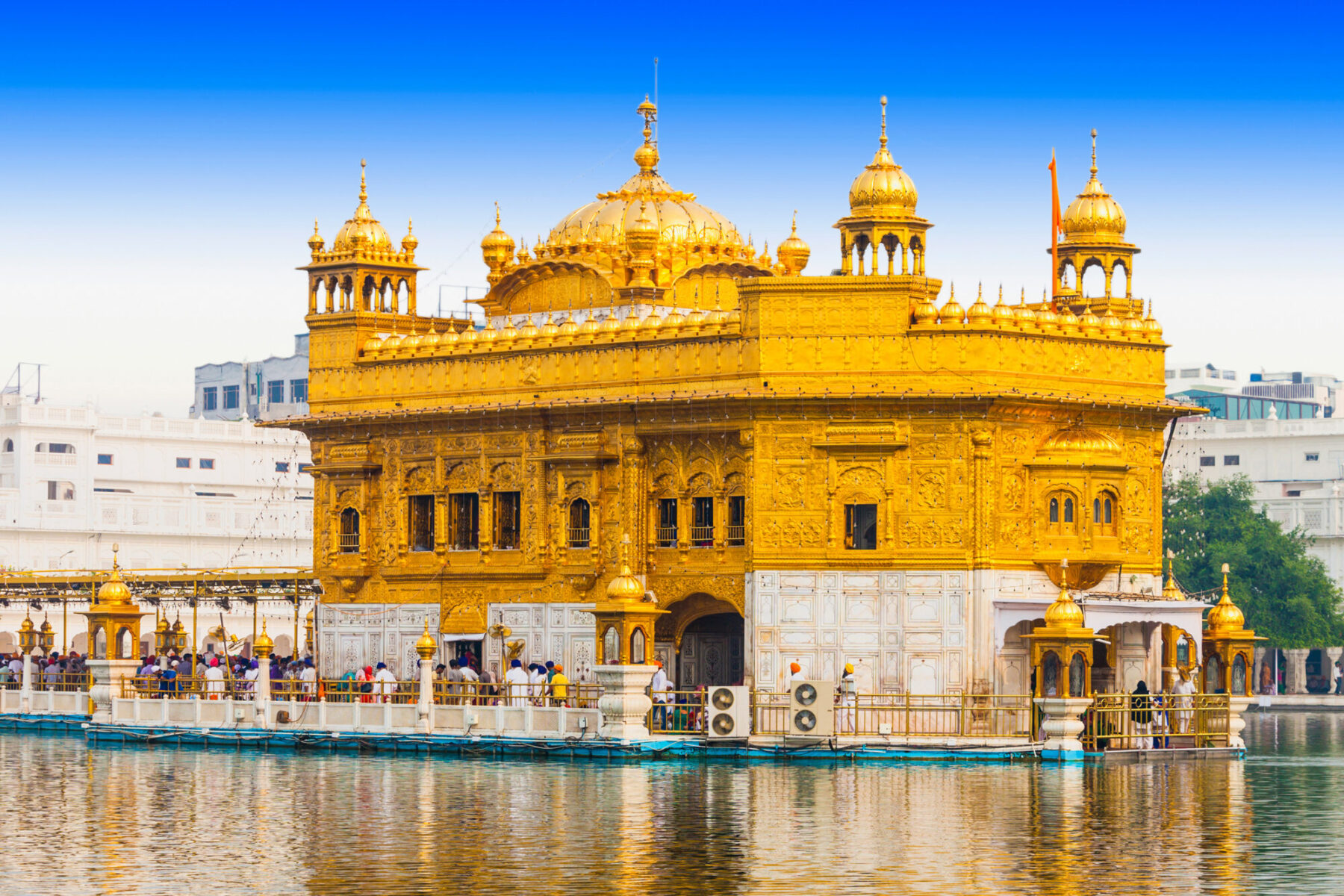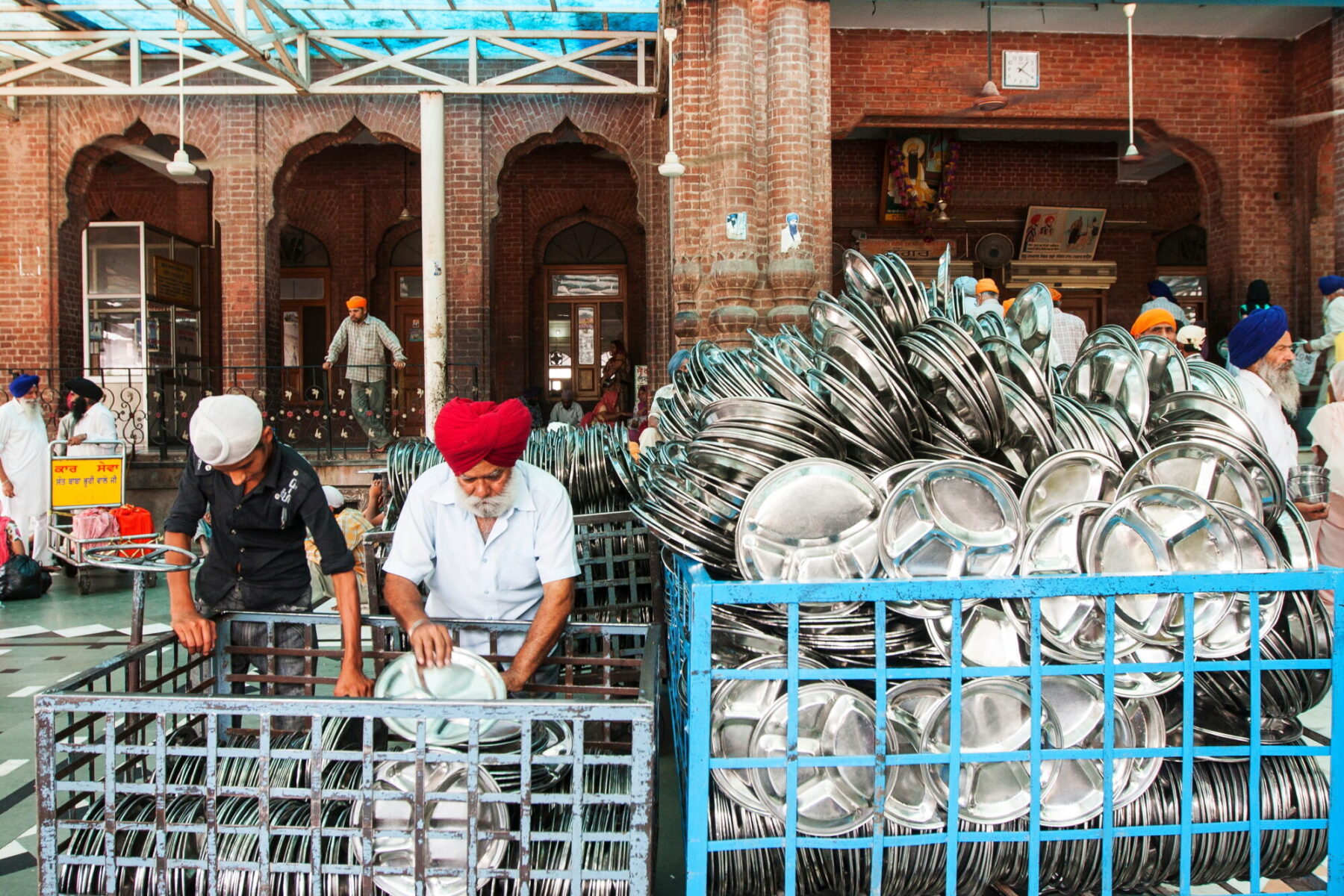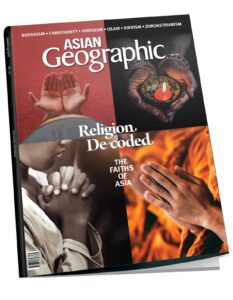Text by Khushi Makasare
Utensils clatter. Sweltering heat engulfs the room. Hundreds of volunteers busily go about their work. These are all familiar to anyone setting foot in the kitchen of the Golden Temple in Amritsar, Punjab. The Golden Temple is the holiest gurdwara, a “door to the guru”. Located in northern India, this place of worship and assembly is the spiritual center for Sikhs all over the world and sees large numbers every day.

THE LANGAR
The Golden Temple, or Harmindir Sahib, runs the Guru Ram Das Langar, the largest community-driven free kitchen and dining hall in the world. Food is available around the clock; pilgrims can show up at the oddest of times to feast here.
About 350 volunteers, or sevadars, provide their service in the kitchen day and night, continuously putting out food for the thousands that show up. The Golden Temple welcomes anyone and everyone, regardless of their economic status or cultural background. Food never runs out and visitors are never turned away.
Everyone is treated as an equal in the Golden Temple: Visitors sit on the floor, cross-legged, and are given the same meal on a metallic tray. To cater to all faiths and dietary restrictions, a dedicated team of volunteers cooks up a fixed vegetarian menu. Meals are typically served with chapatis (flatbread) and daal (lentils), and topped off with a classic Indian sweet rice pudding called kheer. While modest, it’s a filling and nutritious meal.
Devotees sit in endless rows, pangats. On average, around 20,000 people show up at the temple daily, but on special occasions, the temple can see over 100,000 visitors. Large groups of homeless people dine together with the Sikhs without feeling ostracised and discriminated against.

Delivering large amounts of food to rows of people non-stop is no easy task. It’s hard, physically demanding work for the hundreds of sevadars who prepare, cook, serve, and clean in the langar. Yet there is a long line of volunteers ready and willing to put in their time and effort. They believe that working in the kitchen and providing food to the visitors is an act of service (seva) that promotes a stronger, more egalitarian society.
The numbers are staggering. By one estimate, every day, the langar uses around 12,000 kilograms of flour, 1,500 kilograms of rice, 13,000 kilograms of lentils, and around 2,000 kilograms of vegetables. Each day, a mechanized oven and conveyor belt churn out about 200,000 chapatis. From producing the food to the upkeep and expansion of the dining halls, the total expenses amount to approximately USD 4 million per year. The costs are at an all-time high and the numbers are continuing to swell.
So how is it possible to maintain such astonishing figures? In short, extraordinary generosity. The Golden Temple functions entirely through donations from devotees—in cash and kindness, sometimes food. These donations are central to what the community does for the people, regardless of their identity. Moreover, Guru Ram Das Langar isn’t a feature specific to the Golden Temple. Almost every Sikh gurdwara operates langar; the temple at Amritsar happens to be the largest one.

ONENESS IN HUMANITY
Sikhs believe in the idea that food should be available on every corner. The concept of langar was derived from a Sikh guru nearly 500 years ago: A place should exist where everyone, no matter their faith or social background, can sit together as equals and eat the same food, as simple as it may be.
The notion is simple, but it runs far deeper. The philosophy behind free meals was to dilute the Indian caste system that dictated what you eat and with whom you eat. By breaking this norm, Sikhism provides a safe space for visitors, from near and afar, to enjoy a simple meal in a simple setting.
In today’s India, the langar is still as much a revolutionary idea as it was half a millennium ago. It makes a stand against the social divide and advocates for an equal society. Every day, it provides for hundreds, if not thousands, of underprivileged people, who rely on the food that is provided as a source of sustenance.
During a festival, the energy at the gurdwara is unimaginable. The palpable sense of unity and respect between the communities is overwhelming as they gather to celebrate special occasions such as Gurpurab (a celebration of the anniversary of a guru’s birth) and Vaisakhi (marking the initiation of the Khalsa tradition by Guru Gobind Singh). Whole families come together to cook, a tradition that has been kept alive over generations. As the sevadars cook and serve the food to the masses, they mutter the guru’s name.

THE FOUNDATION
Sikhism is based on three pillars – Kirat Karna (honest living), Vand Chakna (sharing with others), and Naam Japna (focus on God). These key values were shaped by Guru Nanak, the founder of Sikhism. According to Sikh tradition, a person following these pillars will achieve spiritual happiness. This ultimately circles back to the Langar. Feeding people without an ulterior motive and out of one’s goodwill is a representation of one’s love and admiration for God.
In Asian Geographic’s Issue No. 153, Religion is decoded as we delve into the major world religions. Covering Christianity, Buddhism, Islam, Hinduism and Sikhism.
This issue follows the rise and fall of these major religions as well as the practices and traditions that have stood the test of time. Journey through the history of these religions and gain a deeper understanding of the beliefs that inspire such deep devotion and faith in their followers.
Pick up your copy here!











